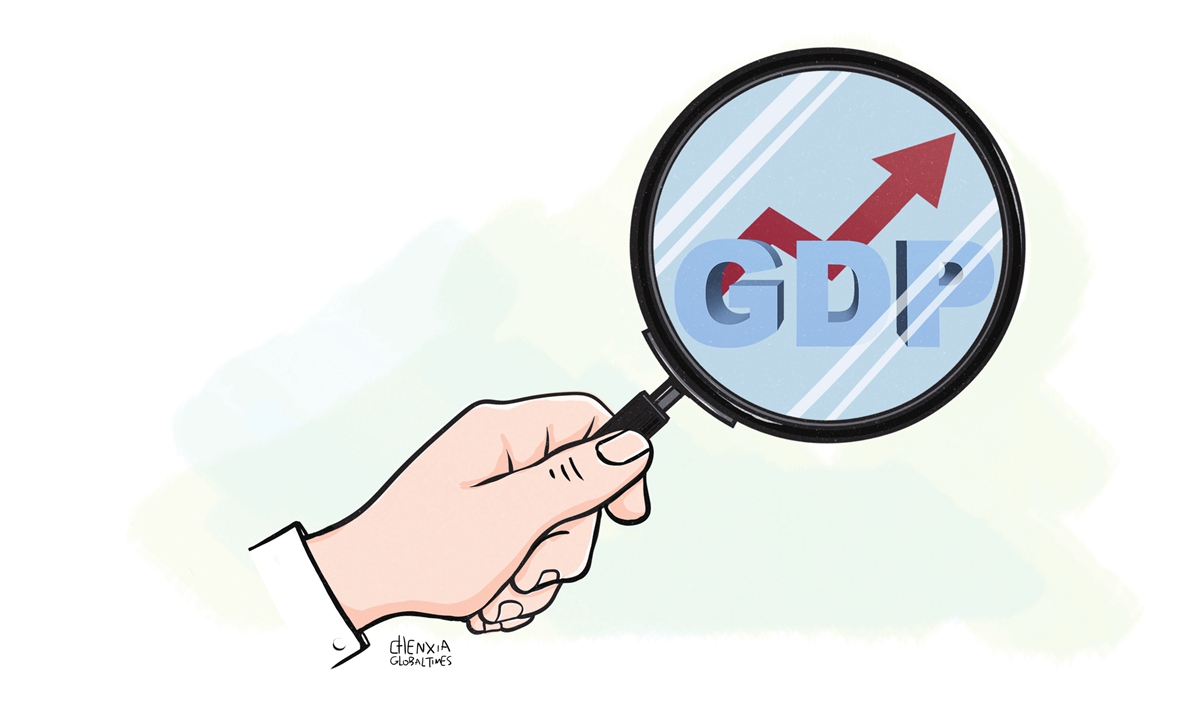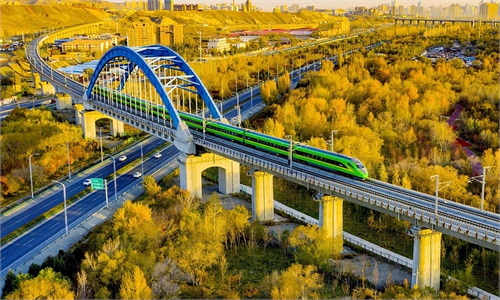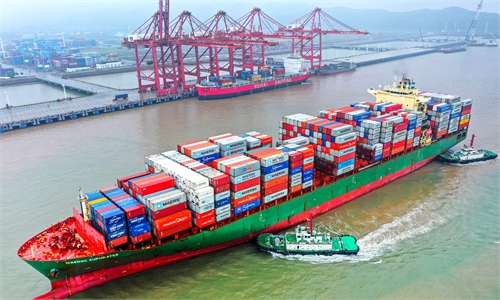
Illustration: Chen Xia/Global Times
Although China's economy picked up impetus in the third quarter with a growth rate of 3.9 percent as reported by the National Bureau of Statistics (NBS) last week, strongly supportive fiscal and financial policies need to be worked out and strictly implemented in order to ensure the fourth-quarter GDP expand by at least 4 percent.During the first nine months of this year, the economy grew by 3 percent, largely dragged down by the lingering COVID-19 pandemic. Over coming months, it is important for the country to strike a better balance between managing coronavirus flare-ups and overall economic and social development by placing more focus on reviving the economy.
Ramping up all pro-growth measures is crucial, including a relatively loose monetary policy to buoy debt-ridden real estate developers with extended credit lines, and work out peculiarly-tailored stimulus policy to inspire home-buying, so as to stop the month-on-month fall of home prices seen in a majority of Chinese cities, because a nationwide property market slump will seriously impede the country's GDP growth, in addition to dragging down local government finances.
At the same time, it is imperative for the government and the state-owned enterprises to protect their workers' employment and income, which will likely lead to a domestic consumption spree in the fourth quarter when Chinese people prepare for the most important two festivals in a year - the 2023 New Year's Day and the traditional Spring Festival, which falls on January 21. Any deterioration in urban employment and erosion in incomes will add more pressure on the economy.
And, China ought to tilt toward bolstering the sprawling private sector in the country - including the internet-based platform giant corporations such as Tencent, Alibaba, Meituan and Didi, for the private firms are deemed the most enterprising and innovative in the economy, and they are also able to create crucially needed jobs. According to the NBS, China's urban jobless rate nudged up to 5.5 percent in September, the highest since June, with the unemployment rate for job-seekers between the ages of 16 and 24 remaining elevated at 17.9 percent.
Despite headwinds that include growing global recession risks, intermittent resurgences of COVID-19 breakouts and domestic property sector contraction, China's economy showed some resilience and its performance exceeded broad expectations in the July-September quarter, proved by the 3.9-percent growth.
The manufacturing sector has largely maintained growing momentum, reflected by official data showing industrial output in September rising 6.3 percent from a year earlier, beating expectations for a 4.5 percent gain, and better than the 4.2 percent rise for August. Also, retail sales grew by 2.5 percent in September from a year ago, with sales of auto vehicles, one of the largest categories by value, surged by an impressive 14.2 percent in the month. China produced more than twice the number of new-energy vehicles in September compared with a year ago. Obviously, auto sector has become one of the highlights of the world's second-largest economy.
Nevertheless, the all-important services sector, such as dining-out and tourism, has remained sluggish, which has been constantly pressured by coronavirus resurgences in major Chinese cities like Shanghai, Shenzhen, Chengdu, Zhengzhou and many others.
As always, in time of marked slowdown, China has counted on the government's extraordinary investment in infrastructure projects to fire up the economic engine. According to official data, year-to-date input in infrastructure sped up to 8.6 percent year-on-year expansion as of the end of September, from 8.3 percent as of August. To re-stimulate the economy, it is important to keep up the infrastructure input. In the first nine months this year, fixed-asset investment reached 42.2 trillion yuan ($5.87 trillion), providing a strong back-up for the economy.
Although China's urbanization has gained significant pace over the past two decades to reach approximately 60 percent as of this year, there is still room for the urbanization rate to rise to the levels of the developed nations to reach their threshold of at least 70 percent, which will require the Chinese government to invest more on urban facilities and amenities while building new inter-city highways and high-speed railways and new city-clusters. It is estimated that more than 100 Chinese cities will have a population of more than one million by 2030, provided the economy keeps on expanding by annualized 4-5 percent.
Compared with other major economies, China still has some distinct bright spots in its macro situation, including relatively controlled inflation and strong growth in foreign trade since the beginning of 2022. The government implemented a series of policies to shore up supply and stabilize prices, which helped offset the impact of imported inflation. In September, the consumer price index grew by 2.8 percent. Meanwhile, exports, a major driver of China's economy, beat expectations with an increase of 5.7 percent in US dollar terms in September. And, in the first three quarters, foreign direct investment into China also maintained a double-digit growth.
Yet, with the growing risk of global stagflation, compounded by mounting external uncertainties and the triple pressures of contracting domestic consumer demand, supply shocks and weakened expectations, plus an increasingly volatile stock market, China's economy is also facing challenges.
It is of great importance to bear in mind that maintaining economic growth while keeping inflation at bay is what the 1.4 billion Chinese people aspire. In business management theory, it is still crucial to make the market force play the decisive role of resource and capital distribution among all types of enterprises - state-owned, privately-own or foreign-invested. China now has around 160 million market players of varied ownerships and sizes, and their thriving has a clear bearing on the country's economic future.
The author is an editor with the Global Times. bizopinion@globaltimes.com.cn



